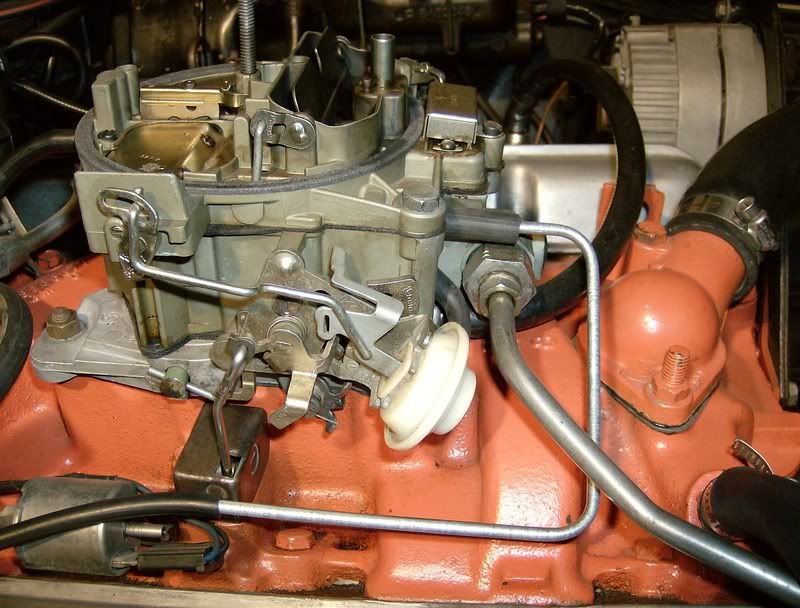Hello,
This afternoon while out setting the timing on my 1970 L-46, i got the timing set, with no vacuum, then with the aid of my dial back timing light, also set the rpm's to 750 at idle. I noticed that my timing light shown rpms, was about 150-200 more than my in dash tachometer rpm's.
After making the adjustments, i reconnected the vac hose to the vac advance pot, and saw no real increase in the advance. I have by passed the TCS for now.
I put a vac guage on the port from the carb, and only saw 8" at idle, not the 15+" i usually see. This stumped me. I stopped work for the day to consider this problem, my lost vacuum.
Tonight I am thinking maybe i have a ported idle carb. My reasoning is that I previously set the idle with the in dash tachometer, which yielded a higher rpm than shown on the tach, thus exposing the vac slot in the carb.
Can anybody out there, (maybe the ever resourceful Joe Lucia) tell me for certain, if the 2040207 carb for a 1970 L-46 is ported or non-ported?
Tomorrow I will test it more, and possibly remove it to look myself.
Thanks much,
Bob
This afternoon while out setting the timing on my 1970 L-46, i got the timing set, with no vacuum, then with the aid of my dial back timing light, also set the rpm's to 750 at idle. I noticed that my timing light shown rpms, was about 150-200 more than my in dash tachometer rpm's.
After making the adjustments, i reconnected the vac hose to the vac advance pot, and saw no real increase in the advance. I have by passed the TCS for now.
I put a vac guage on the port from the carb, and only saw 8" at idle, not the 15+" i usually see. This stumped me. I stopped work for the day to consider this problem, my lost vacuum.
Tonight I am thinking maybe i have a ported idle carb. My reasoning is that I previously set the idle with the in dash tachometer, which yielded a higher rpm than shown on the tach, thus exposing the vac slot in the carb.
Can anybody out there, (maybe the ever resourceful Joe Lucia) tell me for certain, if the 2040207 carb for a 1970 L-46 is ported or non-ported?
Tomorrow I will test it more, and possibly remove it to look myself.
Thanks much,
Bob


Comment